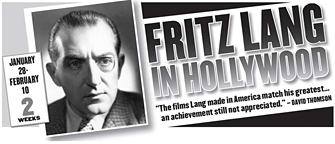Some tropes and plot twists are eternal in movies, but there are other once-familiar devices that have somehow faded away.
When was the last time, for example, that you saw a character in a movie of recent vintage place a handkerchief over the mouthpiece of a phone to disguise his or her voice?
If you’re young enough and aren’t an avid movie buff, you may never have seen such a scene.
But as any fan of motion pictures from the Golden Age of Hollywood can attest, it’s a device that was used over and over, in thriller after film noir after mystery film.
And yet, we’ve never heard anyone question the validity of this practice. Since childhood, we’ve scratched our head over this one, and we have long wondered if we were alone in questioning it.
What mystical property could a pocket handkerchief possess that allows it to magically alter a voice until it is unrecognizable?
For those who really don’t have a recollection of seeing such a scene, we’re offering a snippet of a 1953 film noir, The Blue Gardenia. In this film, Anne Baxter is the subject of a police dragnet on suspicion of murder (though they’ve not yet identified who she is, exactly). In this scene, she calls a newspaper columnist (Richard Conte), who has made an offer via his column to help the “Blue Gardenia” (as the papers have dubbed the unidentified suspect) to tell her side of the story, to exonerate herself of the crime.
And when Baxter calls, she uses—you guessed it—a handkerchief to disguise her voice.
When we watched The Blue Gardenia recently (for what must have been our fifth or sixth viewing), we decided it was time to put the handkerchief method to the test, once and for all. And we’ve done just that below.
The first audio file was recorded without a handkerchief. We simply spoke a few lines of movie dialogue (ones that you will very likely recognize) directly into our iPhone 8.
The second audio file was recorded exactly the same way, only we placed a cotton men’s handkerchief over the phone’s mouthpiece. You can judge for yourself by listening to the two audio files, but for our money, the two files sound remarkably similar. If anything, the second one sounds better, clearer. Not exactly the effect the characters in all those movies were looking for.
So many old movies, so many handkerchief-over-the-mouthpiece scenes. So many lies!
This Cladrite Classic was first published on March 16, 2011.![]()

